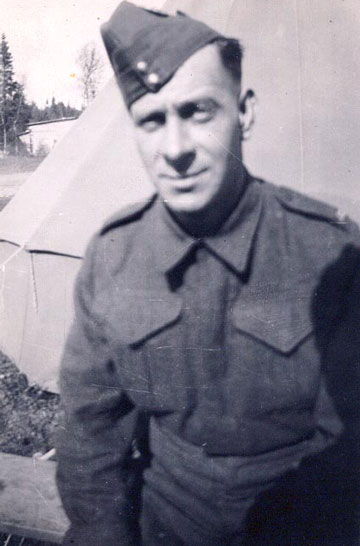Private John Otter Stroyan

John Otter Stroyan was born on 17 July 1896 in Edinburgh, Scotland, the second of nine children of tailor's cutter James Stroyan and his wife Catherine Eleanor (née Otter). In the early years of the 1900s he moved with his family to Ireland, settling in Ballymoney. By the time of the 1911 Census he was living at 1 Henry Street, Ballymoney, with his parents and six of his siblings, and working as a tailor's apprentice for Hugh McC Hamilton & Sons.
Stroyan enlisted in the North Irish Horse on 22 May 1915 (No.1564). On 17 November 1915 he embarked for France with F Squadron, which at the time was serving as divisional cavalry to the 33rd Division. On 27 January 1916 the Ballymoney Free Press reported that:
Trooper John Stroyan, North Irish Horse, son of Mr. Stroyan, Queen Street, has been selected as one of the escort to the Commander-in-Chief of the British Expeditionary Force in France, and is now acting in that capacity.
In June 1916 F Squadron combined with C Squadron and the 6th (Inniskilling) Dragoons Service Squadron to form the 2nd North Irish Horse Regiment, serving as corps cavalry to X Corps until September 1917, when the regiment was disbanded and its men were transferred to the Royal Irish Fusiliers, an infantry regiment. Most, including Stroyan, were transferred on 20 September and posted to the 9th (Service) Battalion – renamed the 9th (North Irish Horse) Battalion – joining it in the field at Ruyaulcourt five days later. Stroyan was issued regimental number 41241 and posted to D Company.
Stroyan was wounded in the face during the Battle of Cambrai, probably in the fighting for the village of Moeuvres on 22 and 23 November. The injury, however, was not serious, and after a week's treatment at the 18th General Hospital, he returned to duty with his battalion.
Stroyan was allowed home on leave in early 1918, and was therefore fortunate to miss the retreat from St Quentin from 21 to 28 March during the initial phase of the German spring offensive, when much of the 9th (NIH) Battalion was captured, killed or wounded.
In April the remnants of the battalion were moved to the Ypres front, where their numbers were bolstered by fresh drafts from the UK and men returning from leave, including Private Stroyan. It was there on 9 April that the Germans began the next phase of their offensive. The 9th (NIH) Battalion saw severe fighting between Wulverghem and Kemmel for more than a week and suffered many casualties, including Private Stroyan, wounded in the leg. The Ballymoney Free Press reported that:
The many friends of Private J. Stroyan in the district will learn with regret that he is in hospital suffering from a shrapnel wound in the leg, which he himself describes as "not too bad." Only a few weeks ago Private Stroyan was at home on fourteen days' leave, when he was looking very fit. On the return journey he was ten days on the road before rejoining all that was left of his unit; when he did arrive a letter from home was handed to him marked "missing." ... All his numerous friends in the Ballymoney district will, we are sure, join in wishing Private Stroyan a speedy recovery.
Soon after it reported that:
From a letter received this week from Private J. Stroyan ... it appears that his wound has proved more serious than at first anticipated. After being in hospital in France for some time, he was transferred to a convalescent camp; and on medical re-examination he was sent to a military hospital in London. Private Stroyan gives, in his letter, a graphic account of the effects of shell fire.
Following his discharge from hospital Stroyan was allowed home on leave. He remained on home service until 19 February 1919, when he was demobilised and transferred to Class Z, Army Reserve.
Soon after the war Stroyan emigrated to Canada. He married Kathleen Mary Fox on 23 June 1934 in Regina, Saskatchewan. He enlisted in the Canadian Army at the beginning of World War 2 (No. L-36824), rising to the rank of sergeant.
He died on 28 November 1953 and was buried in the Surrey Center Cemetery, Cloverdale, Greater Vancouver Regional District.

Images sourced from Ancestry.com Public Member Trees - contributor 'alimakesherway'.
